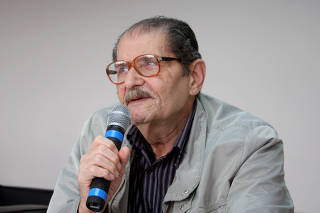I posted earlier in the month about the first papers to appear in the special topic on time-dependent methods in nuclear physics in Frontiers in Physics that I am co-editing with some colleagues. Here are a summary of the next four, which have all appeared since then:
• Far Off Equilibrium Dynamics in Clusters and Molecules (doi: 10.3389/fphy.2020.00027) by Phuong Mai Dinh, Marc Vincendon, Jordan Heraud, Eric Suraud, and Paul-Gerhard Reinhard, describes techniques and results from non-nuclear systems such as small metal clusters, atoms, and molecules. The techniques are compared with analagous methods in nuclear physics, and the differences discussed, such as the need to deal with electron emission, and the interaction with laser fields, as well as the different interactions involved in the density functionals. The plot shown here (from Fig 1 in the paper) shows the response in the dipole moment of a cluster of five sodium atoms to an excitation by a laser pulse. The excitation and deexcitation is seen over a period of about 20 fs (though I dare say the compitational simulation takes some orders of magnitude to reproduce what nature does in real time).
• Predictions of New Neutron-Rich Isotopes at N=126 in the Multinucleon Transfer Reaction 136Xe + 194Ir (doi:10.3389/fphy.2020.00038) by Xiang Jiang and Nan Wang uses the time-dependent Hartree-Fock method to provide a microscopic description of nuclear reactions of the xenon and iridium isotopes mentioned in the title, to look at some non-central reactions in which the reacting nuclei transfer some neutrons form one of the nuclei to the other during their reaction time, and then are left in excited states of another pair of isotopes following the transfer of neutrons. A semiclassical approach (the GRAZING model) is then used to give a statistical de-excitation of the excited fragments to see what final set of isotopes are likely. The purpose is to see if this kind of reaction can be used to study as-yet-unseen isotopes in current experimental facilities. The results are that the proposed reaction should have a cross section large enough to produce new isotopes in presently feasible reactions, for isotopes around N=126 and Z~74. The figure shows snapshots of the time-dependent part of the simulation of the two reacting xenon and iridium nuclei.
• Quasifission Dynamics in Microscopic Theories (doi:10.3389/fphy.2020.00040) by Kyle Godbey and A. S. Umar discusses the microscopic picture of what happens when you try to make the kind of fusion reactions to discover new superheavy nuclei. The two nuclei you are trying to fuse together might, depending on the exact details of how they impact on each other, might briefly fuse before falling apart again ("fusion-fission") or they might graze each other with the transfer of a few nucleons (neutrons, mainly - the mechanism discussed in the paper above by Xiang Jiang and Nan
 Wang) or they might stick together without really fusing to an equilibriated compound nucleus and split apart into two fission fragments from a kind of molecular state. This is quasifission and is discussed here for the purposes of understanding it as a kind of hindrance to forming new superheavy nuclei. The authors show how to identify quasifission in mass-angle distribution measurements and map out the landscape of the briefly-made (super)heavy system, as shown in the figure showing how the entrance and exit channels are constituted in terms of the shapes of the combined system.
Wang) or they might stick together without really fusing to an equilibriated compound nucleus and split apart into two fission fragments from a kind of molecular state. This is quasifission and is discussed here for the purposes of understanding it as a kind of hindrance to forming new superheavy nuclei. The authors show how to identify quasifission in mass-angle distribution measurements and map out the landscape of the briefly-made (super)heavy system, as shown in the figure showing how the entrance and exit channels are constituted in terms of the shapes of the combined system.
• Fusion Dynamics of Low-Energy Heavy-Ion Collisions for Production of Superheavy Nuclei (doi: 10.3389/fphy.2020.00014) by Xiao Jun Bao is a mini-review surveying the literature for the various components of the mechanisms by which superheavy nuclei are formed, or fail to form (such as by the quasifission process discussed above by Godbey and Umar). Aside from covering a broad survey of different theoretical methods, the paper highlights the uncertainty in the probability for a reaction to form a compound nucleus - an excited nucleus made from the colliding fragments which has lost the memory of what the intial fragments were. That uncertainty, then, points to the need for more work in this area. There is one figure in the paper, which neatly shows the possible reactions mechanisms for two colliding heavy nuclei.






